Chinese Competition regulator meets with Mercedes-Benz, Alibaba

The State Administration for Market Regulation, SAMR, announced on Wednesday that China's regulator of the market held a seminar on fair competition, with representatives from seven companies. These included Alibaba and LONGi. The statement stated that the executives who attended the symposium on February 2nd discussed the market, competition and the difficulties they face. They also made suggestions to combat monopolies and unfair competitors. Meng Yang was quoted…
NYK, JERA, Resonac to Study Supplying Ammonia as Fuel to Vessels
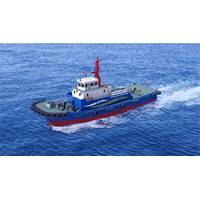
NYK, JERA Co., Inc. and Resonac Holdings Corporation signed an agreement to jointly study the supply of ammonia as fuel to ships.As part of the Green Innovation Fund Project of the New Energy and Industrial Technology Development Organization (NEDO), NYK is conducting research and development of a tugboat equipped with a domestic ammonia-fueled engine (A-Tug) together with other partner companies. As part of this initiative, in conjunction with the completion of the A-Tug scheduled for next June…
Molten Salt Reactors: Maritime’s Nuclear Option
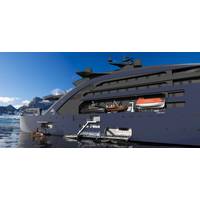
A race is being run by nuclear scientists and ship designers. The prize? “Decarbonization’s” holy grail — believed to be a “small” thorium-fueled, molten-salt rector’s unlimited power to propel sea trade. At the same time, a recently revived discussion among leading marine-nuclear thinkers revolves now around how to put an ultra-modern, as-yet non-existent marine reactor aboard a modern commercial vessel. As with nuclear power generally, shipborne reactors produce national discussion first, then discovery.
NYK to Modify Tugboat to Ammonia Fuel at Keihin Dock Co.
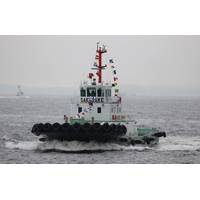
NYK finalized a contract with Keihin Dock Co., Ltd., an NYK Group company, to modify a tugboat to ammonia-fuel specifications. Sakigake, a tugboat currently fueled by liquefied natural gas (LNG) and operated in Tokyo Bay by NYK Group company Shin-Nippon Kaiyosha Corporation will be converted to operate on ammonia fuel by a target completion year of 2024.This R&D was initiated in October 2021 by NYK and IHI Power Systems Co., Ltd.
Carbon Dioxide Removal (CDR) ... To Clear the Air, Look Beneath the Waves
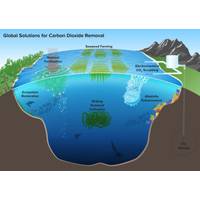
Participants at the 26th United Nations Climate Change Conference (better known as COP26) late last year in Glasgow reiterated humanity needs to accelerate change in the coming decades to limit global warming to 1.5°C (or even to the 2°C as agreed up in the Paris Agreement). Meeting this goal by 2050, the formidable deadline agreed upon across environmental sectors to prevent dooming the planet, will require more than electric cars and veganism. In addition to minimizing emissions at the source…
Floating Offshore Wind: Attention Turns Subsea for Power Transport
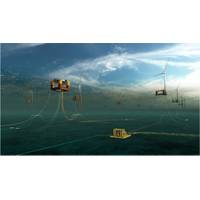
From being an ugly duckling, floating offshore wind is now the Cinderella of the offshore renewables world. Attention is now being paid to floating and even subsea substation concepts to help bring this power to shore. Over the past year, expectations around the growth in the floating offshore wind development have grown, significantly. Many are piling into the market, seeing that it could give them a chance to ramp up renewables capacity quickly, with 15MW turbines…
Nippon Foundation, DeepStar Launch Joint Decarbonization R&D Program

The Nippon Foundation signed a Memorandum of Understanding (MoU) with the offshore technology development consortium DeepStar to establish a joint research and development program focused on decarbonization in offshore oil and gas, with a focus on renewable energy and the environment.The initial program budget is up to $10 million through 2026, and the overall plan is to develop technologies for commercialization.“I am very pleased that we have been able to conclude this new memorandum of understanding,” said Mr. Sasakawa.
Japanese Trio Connects on Project to Reduce Methane Slip by 70%
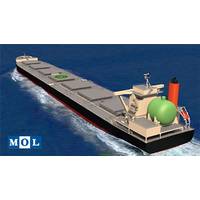
As the global shipping industry is under the microscope to reduce emissions, three Japanese leaders in the maritime space: Hitachi Zosen, Mitsui O.S.K. Lines, Ltd.(MOL) and Yanmar Power Technology Co., Ltd. (YPT), have targeted methane slip as an area of study via its "Development of Methane Slip Reduction Technology from LNG Fueled Vessels by Improving Catalysts and Engines", with Hitachi Zosen serving as the managing company in the "Development of Next Generation…
The Path to Zero: Mitsubishi Shipbuilding, TotalEnergies Study LCO2 Carrier
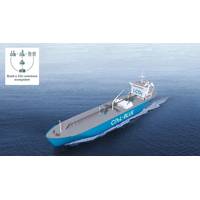
Mitsubishi Shipbuilding has initiated a feasibility study with TotalEnergies for the development of a liquefied CO2 (LCO2) carrier, a key plank in the CO2 ecosystem as carbon dioxide capture, utilization, and storage (CCUS) attracts increasing attention worldwide. An LCO2 carrier would play a pivotal role in transporting CO2 from its emission sources to storage sites or facilities for utilization, and demand for these vessels is expected to increase in the future.Mitsubishi Shipbuilding is actively pursuing commercialization of LCO2 carriers…
Japan Sets Aside $3.4B for Hydrogen R&D
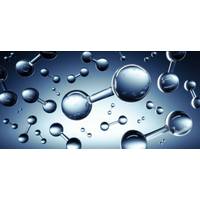
The Japanese government said on Tuesday it will allocate up to 370 billion yen ($3.4 billion) from its green innovation fund for two projects to accelerate research and development (R&D) and promotion of hydrogen use over the next 10 years.Japan unveiled an ambitious goal in December to boost the country's demand for hydrogen to 3 million tonnes a year by 2030, from about 2 million tonnes currently, and to 20 million tonnes by 2050.New Energy and Industrial Technology Development Organization (NEDO)…
MethanQuest: Test Results In for Renewable Hydrogen, Methane as a Fuel
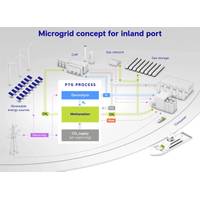
As the maritime industry embarks on 'the path to zero', it is widely acknowledged that there is currently not a 'silver bullet' solution, nor is it likely that a solution will emerge from a vaccum. Collaboration is the path forward, and efforts such as MethanQuest offer promise.The project MethanQuest was launched in September 2018 with 29 partners from research, industry and the energy sector to work on processes for producing hydrogen and methane from renewables and for using them to achieve climate-neutral mobility and power generation.
Ship Power: WinGD Debuts X-DF2.0 Technology
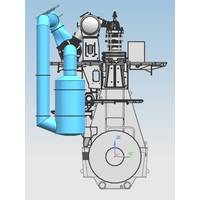
As shipowners mull ‘the fuel of the future’ and eye ever-stricter emission mandates from the International Maritime Organization, companies throughout the ship design, construction and supply chain continue to innovate to deliver optimum fuel efficiency and emission reduction.Today WinGD unveiled a new technology development to its dual fuel line of engines, a technology designed to significantly cut methane slip, emissions and fuel consumption in its X-DF dual-fuel engines via Intelligent Control by Exhaust Recycling (iCER)…
Equinor's $466M Floating Wind Farm Plan Approved
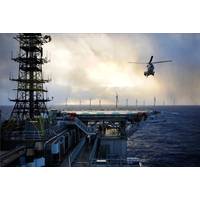
Norway approved on Wednesday Equinor's 4.8 billion Norwegian crowns ($466 million) plan to build floating offshore wind turbines that will provide electricity to North Sea oil and gas platforms, the energy ministry said.The long-planned project is going ahead despite Equinor's decision to cut investment following a plunge in oil prices that has reduced the company's cash flow.Five platforms at Norway's Snorre and Gullfaks fields will be the first in the world to receive power from a floating wind park…
AS Mosley, Fugro Get Funding for FOWT Tech
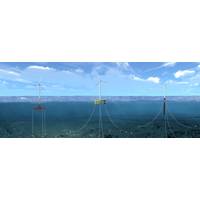
Aberdeenshire-based offshore simulation and analysis company, AS Mosley, Dutch Fugro, together with Strathclyde University, have been awarded funding from The Carbon Trust, to develop new technology for monitoring Floating Offshore Wind Turbines (FOWT). As one of eight projects to benefit from a share of £1m from The Carbon Trust, the project will see the development of a highly efficient method for measuring fatigue and detecting anomalies in real-time for the renewable energy sector…
Project INNTERESTING Aims to Accelerate Wind Technology
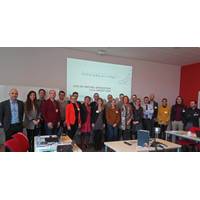
The European project INNTERESTING aims to accelerate wind energy technology development and to extend the lifetime of wind turbine components.Coordinated by the Technological Research Center IKERLAN, Project INNTERESTING, has a budget of $5.2M (€4.75M) and it is financed by the European Union´s H2020 Research and Innovation Program. The full name of the project is “Innovative Future-Proof Testing Methods for Reliable Critical Components in Wind Turbines”. This…
Gassco Urges to Boost Barents Sea Gas Export
Norwegian state-owned natural gas pipelines operator Gassco published a study saying that it could be profitable to increase the transport capacity for gas.According to the study regarding the transport of gas from the southern Barents Sea several gas transport options from the Barents Sea, including a new pipeline, could prove profitable with today’s known resources.The report, "Assessment of gas transport alternatives in the southern Barents Sea", was presented…
Ørsted Secures Funding for Hydrogen Pilot
Offshore wind developer Orsted has secured funding for a demonstration project using offshore wind power to produce renewable hydrogen to power.Seven industrial partners have been awarded funding for a demonstration project in Denmark using offshore wind power to produce renewable hydrogen for road transport.Within energy, Avedøre is best known for housing Ørsted's large biomass-fuelled CHP plant, Avedøre Power Station, but in the future, the area might become home to more than heat and power production.
ABB Tests Subsea Power Technology System
The completion of a final 3,000-hour test phase of the Swiss-Swedish technology multinational ABB’s subsea power infrastructure signals the culmination of a $100m partnership with world oil majors.The company has officially announced the completion of shallow water test proving that its subsea power distribution and conversion technology system for the offshore oil and gas industry is commercially viable.For the first time worldwide, energy companies will be able to access a reliable supply of up to 100 megawatts of power…
U.S. Ingenuity Will Solve Climate Challenge: US DOE
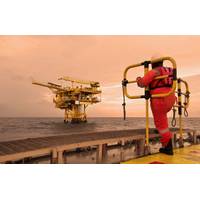
The United States can tackle threats to the climate through technological advances as fossil fuels will remain a priority for the U.S. government and business, the assistant secretary for fossil energy said on Tuesday.The world should look to the United States' ability to reduce its emissions, the Department of Energy's Steven Winberg said at an oil conference in South Africa a day after the Trump administration formally moved to exit the Paris Agreement."We can solve any climate issue with technology development, one thing you see back in U.S.
Offshore Wind – A Brief History
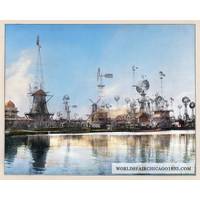
Happy 80th birthday Maritime Reporter & Engineering News! Eighty years is a significant publishing and business accomplishment!Birthdays always cause a look back. An 80-year review starts in 1939, the close of one very challenging decade, the start of events still reverberating today. History’s most important history is contained in the last 80 years.Energy dominated every one of those decades. Consider energy use, say, starting after World War II, from 1950 to 1975.
